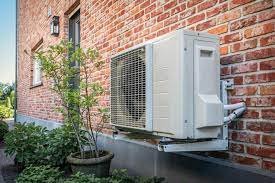Your Furbnow Privacy Settings
In order to give you the best experience, we use cookies for performance, analytics, personalisation, advertising and to help our site function. Want to know more? Read our Privacy Policy.
Published on September 19th, 2023
Varieties of Heat Pumps For UK homeowners, air source heat pumps stand as a prevalent choice, suitable for various residential setups. Conversely, ground source heat pumps emerge as an attractive option for those with ample garden space. In cases where conventional radiators or underfloor heating are absent, air-to-air heat pumps prove viable, particularly for compact living spaces.

For UK homeowners, air source heat pumps stand as a prevalent choice, suitable for various residential setups. Conversely, ground source heat pumps emerge as an attractive option for those with ample garden space. In cases where conventional radiators or underfloor heating are absent, air-to-air heat pumps prove viable, particularly for compact living spaces.
Air Source Heat Pump
The journey of an air source heat pump commences within its outdoor unit, where the refrigerant begins its transformation. Operating fans facilitate the absorption of heat energy from the air as it interacts with a heat exchanger. Despite cold exterior temperatures, ample energy is extracted due to the substantial volume of air passing over the exchanger. This mechanism translates into efficient heat transfer even during winter.
Ground Source Heat Pump
In the case of ground source heat pumps, heat energy is sourced from fluid circulating within subterranean pipes. This water is subsequently pumped to an indoor heat exchanger. The process involves a cooling phase as the fluid, mixed with antifreeze, traverses the exchanger and transfers heat to the refrigerant. The refrigerant continues its circuit, carrying the absorbed heat for distribution.
Air-to-Air Heat Pump
Air-to-air heat pumps transfer heat from the outside air to air inside your home, increasing the temperature of the air in each room. This warm air enters your home through a series of fan coil units, or ‘blowers’.
Air-to-air heat pumps are sometimes referred to as air conditioning. While many people think of air conditioning as a way of cooling buildings, it can also be used for heating.
An air-to-air heat pump does not heat water delivered to the taps, so you will need to consider an alternative way of heating water for showering and bathing.
Air-to-Water Heat Pump
Air to water heat pumps take heat from the outside air and transfer it to a wet central heating system, usually through radiators or underfloor heating. The created heat can be used for space heating or as a hot water supply for the house. Air to water heat pumps are among the most efficient air source heat pumps on the market. Their efficiency can go as high as 400% depending on the conditions, but usually, you can expect at least 200% efficiency.
The inner workings of an air to water heat pump can be complicated but, in essence, it begins with the outdoor unit, which absorbs heat from the surrounding air. This collected heat is then transferred to a coolant inside the system. To further increase its temperature, a compressor comes into play.
Written by

Oisin Teevan